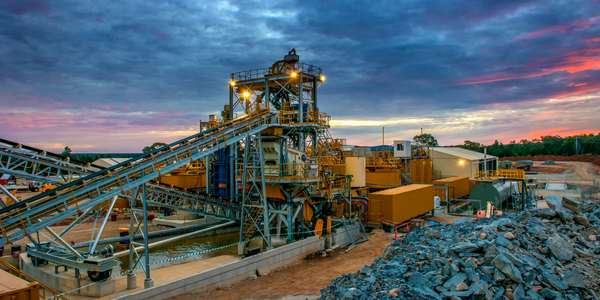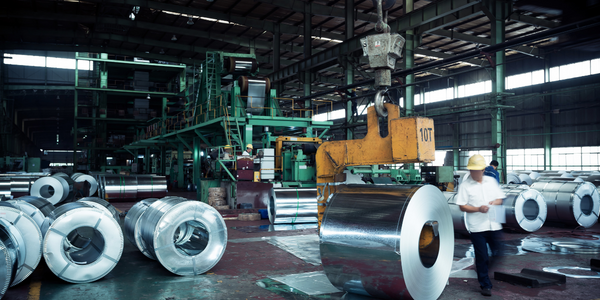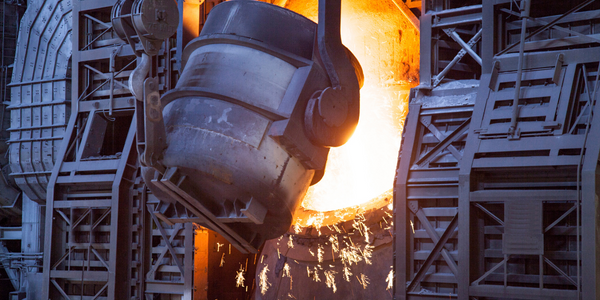Technology Category
- Functional Applications - Inventory Management Systems
- Platform as a Service (PaaS) - Application Development Platforms
Applicable Industries
- Life Sciences
- Metals
Applicable Functions
- Procurement
- Sales & Marketing
Use Cases
- Demand Planning & Forecasting
- Inventory Management
About The Customer
The customer is one of the world's largest steel wire manufacturers, with a geographically diversified presence in over 20 countries. As a major player in the steel industry, the company is committed to delivering high-quality products to its customers. However, they were facing challenges in terms of customer service, measured by On Time In Full (OTIF), and had issues with their capacity and material planning processes. These processes were manual and lacked accuracy, leading to excess inventory, shortages, and plant underutilization. The company was in need of a solution that could improve their planning accuracy, reduce inventory, and enhance their overall operational efficiency.
The Challenge
The company, one of the world's largest steel wire manufacturers with operations in over 20 countries, was facing significant challenges in customer service, capacity and material planning. Their On Time In Full (OTIF) performance was considerably low compared to their competitors, indicating a lack of efficiency in their operations. The company's capacity and material planning processes were entirely manual and lacked accuracy, leading to an excess of inventory, shortages, and plant underutilization. Furthermore, their Raw Material Planning was inaccurate as detailed BOM compositions, lead times, and alternative sources were not considered in the supply model and were done in Excel. The company also lacked effective capacity planning, leading to inaccurate sales allocations. Lastly, their order promising was inaccurate due to a lack of tools for detailed order planning.
The Solution
The company partnered with o9 to address these challenges. o9's platform enabled the company to perform master planning with detailed BOM, material and capacity constraints, and lead times, significantly increasing the accuracy of their Raw Material planning. The platform also provided scenario-based capacity planning integrated with demand planning, enabling accurate decisions on quotas for sales personnel. Additionally, the company was able to leverage the tools available on o9’s platform to perform master planning and order promising, which increased planning accuracy. The o9 Enterprise Knowledge Graph was used for true End-to-End planning, including demand, capacity, master planning, and order promising. The ability to run scenarios and have real-time demand-supply synchronization proved to be a game-changer for the organization. The company replaced their homegrown solutions and Excel with o9's platform.
Operational Impact
Quantitative Benefit

Case Study missing?
Start adding your own!
Register with your work email and create a new case study profile for your business.
Related Case Studies.

Case Study
Goldcorp: Internet of Things Enables the Mine of the Future
Goldcorp is committed to responsible mining practices and maintaining maximum safety for its workers. At the same time, the firm is constantly exploring ways to improve the efficiency of its operations, extend the life of its assets, and control costs. Goldcorp needed technology that can maximize production efficiency by tracking all mining operations, keep employees safe with remote operations and monitoring of hazardous work areas and control production costs through better asset and site management.

Case Study
KSP Steel Decentralized Control Room
While on-site in Pavlodar, Kazakhstan, the DAQRI team of Business Development and Solutions Architecture personnel worked closely with KSP Steel’s production leadership to understand the steel production process, operational challenges, and worker pain points.

Case Study
Bluescope Steel on Path to Digitally Transform Operations and IT
Increasing competition and fluctuations in the construction market prompted BlueScope Steel to look toward digital transformation of its four businesses, including modern core applications and IT infrastructure. BlueScope needed to modernize its infrastructure and adopt new technologies to improve operations and supply chain efficiency while maintaining and updating an aging application portfolio.

Case Study
RobotStudio Case Study: Benteler Automobiltechnik
Benteler has a small pipe business area for which they produce fuel lines and coolant lines made of aluminum for Porsche and other car manufacturers. One of the problems in production was that when Benteler added new products, production had too much downtime.

Case Study
Continuous Casting Machines in a Steel Factory
With a very broad range of applications, steel is an important material and has been developed into the most extensive alloy in the engineering world. Since delivering high quality is absolutely crucial for steel plants, ensuring maximum productivity and the best quality production are the keys to competitiveness in the steel industry. Additionally, working conditions in steel factories are not suitable for workers to stay in for long periods of time, so manufactures usually adopt various machines to complete the steel production processes. However, the precision of these machines is often overestimated and the lack of flexibility also makes supervisors unable to adjust operating procedures. A renowned steel factory in Asia planned to improve its Distributed Control System (DCS) of furnaces as well as addressing the problem of insufficient accuracy. However, most well-known international equipment suppliers can not provide a satisfactory solution and local maintenance because the project needed new technologies to more accurately control equipment operations. By implementing Advantech’s automated monitoring and control solution, steel factories can not only improve the manufacturing processes but can also allow users to add additional functions to the existing system so as to make sure the operation runs at high efficiency.

Case Study
Automated Predicitive Analytics For Steel/Metals Industry
Asset to be monitored: Wire Compactor that produces Steel RebarCustomer Faced The Following Challenges:Dependent upon machine uptime.Pressure cylinders within the compactor fail to control compression and speed causing problems in binding the coil.Equipment failure occurs in the final stage of production causing the entire line to stop, can you say bottleneck?Critical asset unequipped with sensors to produce data.







